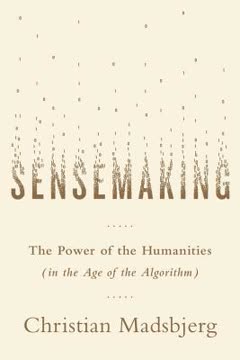Key Takeaways
1. Perception is Embodied, Not Just Intellectual
Our bodies are not separated from the world; they are enmeshed in it.
Beyond the Mind. We don't perceive the world as detached observers, but as beings deeply intertwined with our surroundings. Our bodies, not just our minds, are the primary instruments of perception. This means that our experiences are shaped by our physical presence and interactions with the world, not just by abstract thought.
- Think of optical illusions: they demonstrate how our perception is not a direct reflection of reality, but a construction of our embodied experience.
- The size constancy phenomenon: our perception of size is held constant until it abruptly changes, showing that our experience is not a steady recording of the world.
Immersive Experience. Like infants, we exist in a state of immersion with our environment. We don't analyze the world from a distance; we are part of it. This embodied perspective is crucial for understanding how we make sense of our surroundings and how we interact with them.
- Consider the experience of walking down a street: we don't see individual details in isolation, but rather a coherent whole, like "school" or "construction site."
- Our bodies orient themselves to achieve "optimal grip," demonstrating that our physical presence is integral to our perception.
Challenging Descartes. This idea challenges the Cartesian notion of a detached mind observing the world. Instead, our bodies are active participants in the process of perception, shaping how we experience and understand reality.
- Our perception is not a passive reception of data, but an active engagement with the world.
- This embodied perspective is essential for understanding how we make meaning and navigate our daily lives.
2. Meaning is Found in Wholes, Not Just Parts
The whole was entirely different from its parts—not the sum of or even greater than the parts. What if the whole existed in our consciousness prior to the parts?
Gestalt Theory. We perceive the world in organized wholes, or "gestalts," rather than as isolated parts. This means that our understanding of a situation or object is not simply the sum of its individual components, but a unified experience that emerges from the relationships between those parts.
- Think of a melody: it's not just a collection of individual notes, but a unified whole that we recognize even when transposed to different scales.
- The "house" example: a rectangle and a triangle become a "house" not because of their individual shapes, but because of their relationship to each other.
Perception First. Our perception of the whole often precedes our perception of the parts. We experience the overall context first, and then fill in the details. This means that the whole determines what counts as a part, not the other way around.
- Consider the experience of seeing a train approaching: we perceive the train as a whole, not as a series of individual data points.
- The shift from lines to "harbor": we see the whole of the harbor before we see the individual lines of the masts.
Meaningful Context. Meaning is not inherent in individual objects or events, but arises from their context within a larger whole. This means that our understanding of the world is shaped by the relationships between things, not just by their individual properties.
- A chair is not just a collection of shapes and materials, but a meaningful object within the context of a room, a meeting, or a dinner table.
- Money is not just paper or metal, but a shared language for value that is experienced differently across cultures.
3. Observation Requires Detachment from Opinion
Begin and end with description, not opinion.
Suspend Judgment. The best observers put their opinions on pause, especially in the early stages of the observational process. This means that we must resist the urge to jump to conclusions or impose our own beliefs on what we are seeing.
- Instead of concluding, we need to notice, see, watch, and observe.
- This can feel uncomfortable, as we crave certainty, but it is essential for discerning the truth.
Focus on Description. The heart of good observation is to describe what is happening without trying to uplift, persuade, or cast aspersions. This means that we must detach our descriptions from our own feelings and moral judgments.
- Morality is of no interest in the earliest stages of observation.
- What we think is not the point; the goal is to record the activity in front of us.
Liberating Stillness. Suspending judgment is liberating. Instead of opining or jumping into a theory, we wait, watch, and describe. This allows us to see the mysteries that reveal themselves.
- When we start with the intention to not make up our minds, we see our own perception at work.
- This stillness allows us to see what is most relevant, rather than what we expect to see.
4. The "How" Matters More Than the "What"
Our job as observers is not to pay attention to what other people think.
Beyond Words. People often say things they don't mean, so the best observers move beyond what is said or done to understand why people behave the way they do. This means that we must look for the underlying patterns and beliefs that structure behavior, not just the surface-level actions.
- We want to understand the whole picture: how do people think, what do they believe to be true, and what makes them do the things they do?
- The observer's role is to move beyond what's said or done to truly understand why people behave the way they do.
Unarticulated Beliefs. We need to listen for the "how" in people's thinking, not just the "what." This means that we must pay attention to the unarticulated beliefs and practices that guide their actions, which are often so familiar that they are never consciously considered.
- Consider the difference in child-rearing in Copenhagen and New York City: the "how" of thinking is exposure in Copenhagen and protection in New York.
- The "how" is the whole picture, the idea of exposure or protection, not just the details of parenting philosophies.
Whole-Picture Understanding. This kind of understanding does not appear immediately. It takes patience and analytical rigor to move beyond the red herrings of "what" people say and to uncover the "how" of their behavior.
- We must wait for a key to unlock the portal: "How does this world work?"
- This is how another reality reveals itself to us, beyond the surface-level details.
5. Social Silence Reveals Hidden Truths
The journalist was so caught up in capturing those who were shouting that she missed those who stood in silence.
Beyond the Noise. Meaningful insights often lie in what is not said or seen, in the social silences that surround us. This means that we must pay attention to the background, to the things that are often overlooked or taken for granted.
- The journalist who missed the silent older generation at the student protest missed the larger story.
- The executive who focused on screen resolution missed the shift to mobile devices.
Unspoken Rules. Social silence reveals the unspoken rules and practices that structure our behavior. These are the things that are so familiar that we rarely think about them, but they are often the most important for understanding how a social context works.
- Consider the rules of a coffee shop: how people move, order, and settle in, and what happens when someone breaks those rules.
- These unspoken rules are obvious to everyone within the context, but often invisible to outsiders.
Doxa and Power. What is not said, what is socially silent, is often what is most important. This "doxa" reveals the power structures and hidden assumptions that shape our world.
- Gillian Tett's observation of the financial crisis: the silence around the human impact of complex financial instruments revealed the system's inherent risks.
- By paying attention to what is missing, we can uncover the hidden truths that are often overlooked.
6. Cultural Shifts are Fluid and Ever-Changing
What determines our judgment, our concepts and reactions, is not what one man is doing now, an individual action, but the whole hurly-burly of human actions, the background against which we see any action.
Chains of Equivalence. The meaning of words and concepts is not fixed, but constantly changing in relation to other words and concepts. This means that we must understand how different ideas are connected within a particular cultural context.
- Consider the word "freedom": it can be connected to different ideas, such as small government or social welfare, depending on the context.
- These "chains of equivalence" reveal the underlying values and beliefs that shape our understanding of the world.
Dislocation and Change. Cultural shifts occur when the meaning of key concepts is disrupted, creating a sense of dislocation. This can happen during periods of economic upheaval, social unrest, or technological change.
- The collapse of the Soviet Union: it changed the meaning of "socialism" and "revolution" for many people.
- The rise of electric vehicles: it is shifting the meaning of "outdoors," "environment," and "conservation."
Fluidity of Meaning. The structures defining our world are constantly evolving and open to suggestion. This means that we must be aware of the fluidity of meaning and the potential for change in any social context.
- The meaning of "family," "work," and "success" are all constantly changing.
- By understanding how these concepts are connected, we can better anticipate and navigate cultural shifts.
7. Details are Portals to Deeper Understanding
The thing, as a whole, its quality as a whole, is what is interesting.
Beyond the Surface. Details are not just isolated facts, but portals to deeper understanding. This means that we must pay attention to the seemingly small and insignificant aspects of a situation, as they can often reveal hidden truths and patterns.
- Robert Caro's observation of Lyndon Johnson's morning run: it revealed the depth of his ambition and his relationship to power.
- The concrete cylinder at Philip Johnson's Glass House: it revealed the way we perceive space and our relationship to it.
Analytical Empathy. By immersing ourselves in the details of a situation, we can develop analytical empathy, which allows us to understand the world from another person's perspective. This means that we must be willing to step outside of our own experiences and see the world through the eyes of others.
- Caro's experience of sleeping alone in the Texas Hill Country: it allowed him to understand the loneliness of Johnson's mother.
- By understanding the details of another's experience, we can gain a deeper understanding of their motivations and beliefs.
Gestalt Shifts. The most meaningful details are those that create a gestalt shift, a sudden change in our perception that reveals a new understanding of the whole. This means that we must be open to the unexpected and willing to let go of our preconceived notions.
- The shift from seeing lines to seeing a harbor: it reveals how our perception is shaped by context.
- The shift from seeing a small dot to seeing a large train: it reveals how our perception is not a steady recording of reality.
8. Observation Requires Time and Patience
Observation takes time.
Slow and Nonlinear. The best observations are not rushed or forced, but emerge from a slow, singular, and nonlinear process. This means that we must be patient and allow ourselves the time and space to explore a phenomenon without any preconceived notions.
- We cannot follow a five-point plan, and we will not work like a scientist.
- We must grow comfortable with doubting and drifting, allowing our curiosity to guide us.
Beyond Productivity. The act of "looking" is the most productive way we can spend our time, even if it doesn't feel that way. This means that we must resist the urge to focus on immediate results and instead prioritize the process of observation itself.
- All activity is meaningless without a genuine insight to guide our efforts.
- We must be willing to let go of the need to check off boxes and instead embrace the uncertainty of the observational process.
Freedom to Explore. We must give ourselves the freedom to say, "I don't know," and then try to look around and find out. This means that we must resist the urge to jump to conclusions or impose our own beliefs on what we are seeing.
- We must be willing to let go of our need for certainty and instead embrace the mystery of the unknown.
- This freedom is essential for arriving at meaningful insights and for developing an independent mind.
9. The Observer is Part of the Observed
The emotions and behaviour of the watcher are also facts, and they must be truthfully recorded.
Beyond Detachment. We cannot observe the world from a detached perspective, as if we are standing outside of it. Instead, we are always part of the phenomenon we are observing, and our own experiences and biases shape what we see.
- Baker's observation of the peregrine falcon: he is part of the whole, not a detached observer.
- Our own emotions and behaviors are also facts that must be truthfully recorded.
Self-Transformation. The best observations change us. This means that we must be open to the possibility of self-transformation and willing to let go of our own assumptions and preconceptions.
- We must allow ourselves to be influenced by what we are observing, to see the world through the eyes of others.
- This transformation is essential for developing empathy and for understanding the world in a deeper way.
Analytical Empathy. We must strive to understand the bodily experience of another, whether human or animal. This means that we must be willing to step into their shoes and see the world from their perspective.
- We must ask ourselves: What does the world look like through their eyes? What do they feel driven to do and why?
- This analytical empathy is essential for developing a truly meaningful understanding of the world.
10. Everything Begins with Direct Observation
Don’t think, look.
Beyond Abstraction. We must start with direct observation, not with models, theories, or any other abstract layer over our experience. This means that we must resist the urge to jump to conclusions or impose our own beliefs on what we are seeing.
- We must strip away the received wisdom and assumptions and take stock of what our observations reveal about the rich reality of the world we all share.
- Instead of beginning an inquiry by looking at numbers or a preformed hypothesis, start with direct observation.
To the Thing Itself. We must study the thing itself—be it a work of literature, death, family, a car, a vaccine, or the hospital—without preconceived notions, trendy easy answers, or dogma imposed on it.
- This is how we begin to arrive at the types of observations that lead to insights.
- We must always return to the phenomenon and look for the behavior and unarticulated beliefs that structure it.
The Power of Looking. When we learn to observe both the background and the foreground, we train ourselves to see what really matters to ourselves and to other people. This means that we must be willing to slow down, pay attention, and resist the urge to rush to judgment.
- The richest reality is revealed when we start paying attention to what is most relevant.
- This kind of direct observation does not rely on models, theories, or any other abstract layer over our experience, and that is why it is the most accurate way to understand how and why we humans do what we do.
Last updated:
FAQ
1. What is "Look: How to Pay Attention in a Distracted World" by Christian Madsbjerg about?
- Core Premise: The book explores how to develop the skill of observation in a world filled with distractions, teaching readers to see what truly matters in both personal and professional contexts.
- Philosophical Foundation: Madsbjerg draws on phenomenology, especially the work of Maurice Merleau-Ponty, to argue that real understanding comes from observing the background—the "hurly-burly" of human action—rather than just the obvious foreground.
- Practical Application: Through stories, exercises, and case studies, the book provides a framework for cultivating "hyper-reflection," a meta-skill for seeing the world more clearly and insightfully.
- Interdisciplinary Approach: The book blends philosophy, art, anthropology, and business, showing how observation is essential for innovation, empathy, and meaningful change.
2. Why should I read "Look: How to Pay Attention in a Distracted World" by Christian Madsbjerg?
- Improve Observational Skills: The book offers actionable techniques to enhance your ability to notice and interpret the world, which is valuable in any field.
- Combat Distraction: Madsbjerg addresses the modern challenge of constant distraction and provides tools to regain focus and depth in your attention.
- Gain Insight for Innovation: By learning to observe the background, you can uncover insights that lead to better decisions, creativity, and problem-solving.
- Applicable to Everyday Life: The methods and stories are relevant whether you’re a business leader, artist, student, or simply seeking to understand people and situations more deeply.
3. What are the key takeaways from "Look: How to Pay Attention in a Distracted World"?
- Observation Over Opinion: True understanding comes from careful observation, not from jumping to conclusions or relying on preconceived frameworks.
- Foreground vs. Background: Most people focus on the obvious (foreground), but real insights come from analyzing the background—the context, patterns, and unspoken rules.
- Phenomenology as a Tool: The book advocates for phenomenology, the study of lived experience, as a way to access deeper truths about human behavior and meaning.
- Practice and Patience: Developing observational skill is a slow, deliberate process that requires patience, humility, and a willingness to suspend judgment.
4. How does Christian Madsbjerg define "observation" and why is it important in "Look: How to Pay Attention in a Distracted World"?
- Direct Engagement: Observation is described as the disciplined act of noticing what is actually happening, not what you assume or expect.
- Beyond Data and Models: Madsbjerg argues that observation is more reliable than abstract models, statistics, or theories when it comes to understanding human behavior.
- Foundation for Insight: Observation is the starting point for all meaningful insights, innovations, and solutions, as it reveals the underlying structures of reality.
- Not Just Seeing, But Perceiving: The book emphasizes that observation involves perceiving wholes (gestalts) and context, not just isolated details.
5. What is "hyper-reflection" in "Look: How to Pay Attention in a Distracted World" and how can it be developed?
- Definition: Hyper-reflection is a meta-skill that involves observing not just the world, but also your own process of seeing and interpreting it.
- Cultivating Awareness: It requires becoming aware of your own assumptions, biases, and the habitual ways you make sense of things.
- Practical Exercises: The book provides exercises such as detailed note-taking, observing familiar places with fresh eyes, and recording patterns in language and behavior.
- Continuous Practice: Hyper-reflection is developed through ongoing, intentional practice and by embracing discomfort and doubt as part of the learning process.
6. What is the difference between foreground and background observation according to "Look: How to Pay Attention in a Distracted World"?
- Foreground: Refers to the obvious, attention-grabbing elements—what people say, dramatic events, or visible trends.
- Background: Encompasses the context, unspoken rules, patterns, and social structures that shape behavior but are often overlooked.
- Importance of Background: Madsbjerg argues that the background is where the real meaning and drivers of action reside; missing it leads to superficial understanding.
- Training the Eye: The book teaches readers to shift their attention from the foreground to the background to uncover deeper insights.
7. How does phenomenology shape the approach in "Look: How to Pay Attention in a Distracted World"?
- Focus on Lived Experience: Phenomenology is used as the philosophical foundation, emphasizing the importance of describing experiences as they are lived, without filters or abstractions.
- Wholes Before Parts: The approach insists that we perceive and make sense of the world as organized wholes (gestalts), not as isolated data points.
- Intersubjectivity: The book highlights the "intersubjective" space—shared meaning between people—as the true ground for understanding.
- Practical Application: Phenomenology guides the observational exercises and case studies, showing how to access the structures of meaning in everyday life.
8. What are the six common misunderstandings about perception and attention discussed in "Look: How to Pay Attention in a Distracted World"?
- 1. We Hear and See Raw Data: In reality, we always perceive meaning, not just sensory input.
- 2. Science Explains It All: Reductionist scientific models often miss the complexity and context of human worlds.
- 3. We See Like a Camera: Human perception is not a mechanical recording; it is shaped by context and meaning.
- 4. Perception Is Intellectual: Most perception is pre-conceptual and embodied, not the result of conscious thought.
- 5. Seeing Is Subjective: Our experiences are always shaped by shared social backgrounds, not just private subjectivity.
- 6. Attention Is Focus: Attention is more often a diffuse, ambient awareness (floodlight) than a narrow spotlight.
9. What practical exercises and methods does "Look: How to Pay Attention in a Distracted World" recommend for improving observation?
- Detailed Observation: Spend an hour observing a familiar place, recording only what you actually see, hear, and smell, not your opinions or assumptions.
- Transcribing Language: Write down the specialized language and idioms used in your professional or social world as if hearing them for the first time.
- Observing Social Practices: Watch how people interact in groups, adjust distance, or move through spaces like museums or streets.
- Embracing Doubt: Use abductive reasoning—allowing for uncertainty and flashes of insight—rather than relying solely on deduction or induction.
10. How does "Look: How to Pay Attention in a Distracted World" use art, science, and case studies to illustrate its concepts?
- Art and Perception: The book analyzes artists like Cézanne, Turrell, and Judd to show how art can reveal the structures of perception and attention.
- Gestalt Psychology: It recounts the history of gestalt theory to explain how we perceive organized wholes rather than isolated parts.
- Anthropological Case Studies: Madsbjerg draws on fieldwork and stories from anthropology to demonstrate how observing the background leads to cultural insights.
- Business and Innovation: Real-world examples, such as the Ford F-150 electric truck project, show how background observation can drive successful innovation.
11. What is the role of doubt and abductive reasoning in observation, according to "Look: How to Pay Attention in a Distracted World"?
- Doubt as a Tool: The book argues that embracing doubt is essential for seeing beyond assumptions and opening up to new insights.
- Abductive Reasoning: Unlike deduction or induction, abduction allows for creative leaps and the discovery of new patterns from incomplete data.
- Discomfort Precedes Insight: The process of not knowing and feeling disoriented is often a necessary precursor to genuine understanding.
- Historical Examples: The book references figures like Franz Boas and Charles Sanders Peirce to illustrate how doubt and abduction have led to breakthroughs in science and culture.
12. What are the most memorable quotes from "Look: How to Pay Attention in a Distracted World" and what do they mean?
- "The hardest thing of all to see is what is really there." — J. A. Baker, quoted to emphasize the challenge of perceiving reality without filters or assumptions.
- "Don’t think, look." — A recurring mantra in the book, urging readers to suspend analysis and simply observe.
- "The whole is more than the sum of its parts." — From gestalt theory, highlighting that meaning emerges from context and relationships, not isolated details.
- "Observation is not opinion." — A reminder that the goal is to describe and understand, not to judge or theorize prematurely.
- "Work like a bird." — From The Peregrine, suggesting that most of our time should be spent in preparation and observation, with brief moments of decisive action.
Review Summary
Look receives mixed reviews, with an average rating of 3.18/5. Some readers find it insightful, praising its focus on observation and phenomenology. However, many feel the book doesn't deliver on its title's promise, offering more philosophical background than practical advice. Critics note repetitive content and a disconnect between the title and actual content. Some appreciate the historical examples and concepts like "social silence," while others find it tedious and lacking in new information. The final chapter about J.A. Baker's falcon observations is often highlighted as a standout.
Similar Books
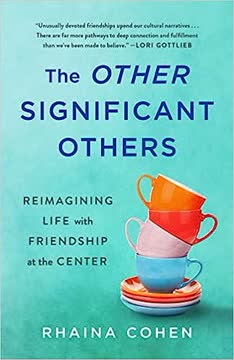
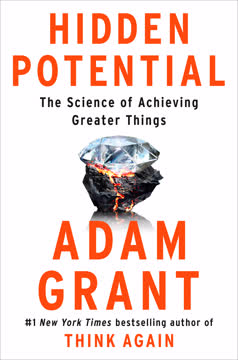
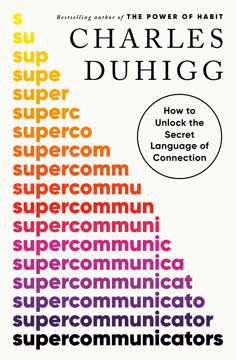
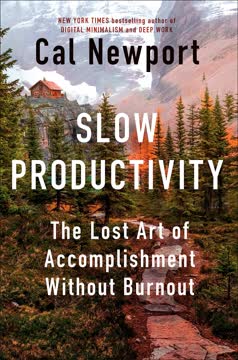
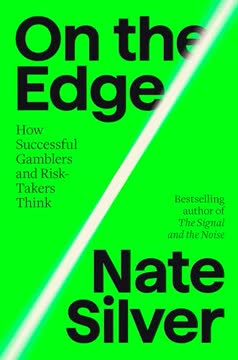
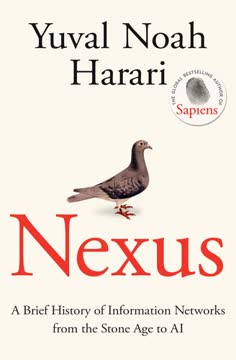
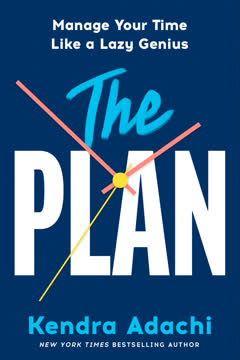
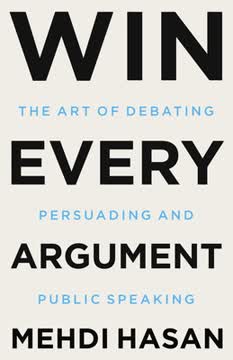
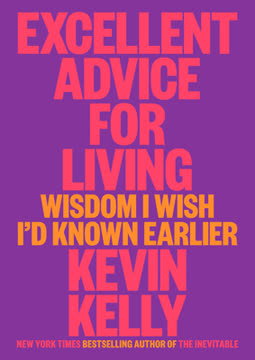
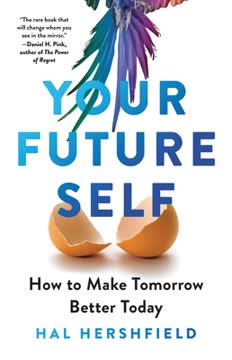
Download PDF
Download EPUB
.epub digital book format is ideal for reading ebooks on phones, tablets, and e-readers.

